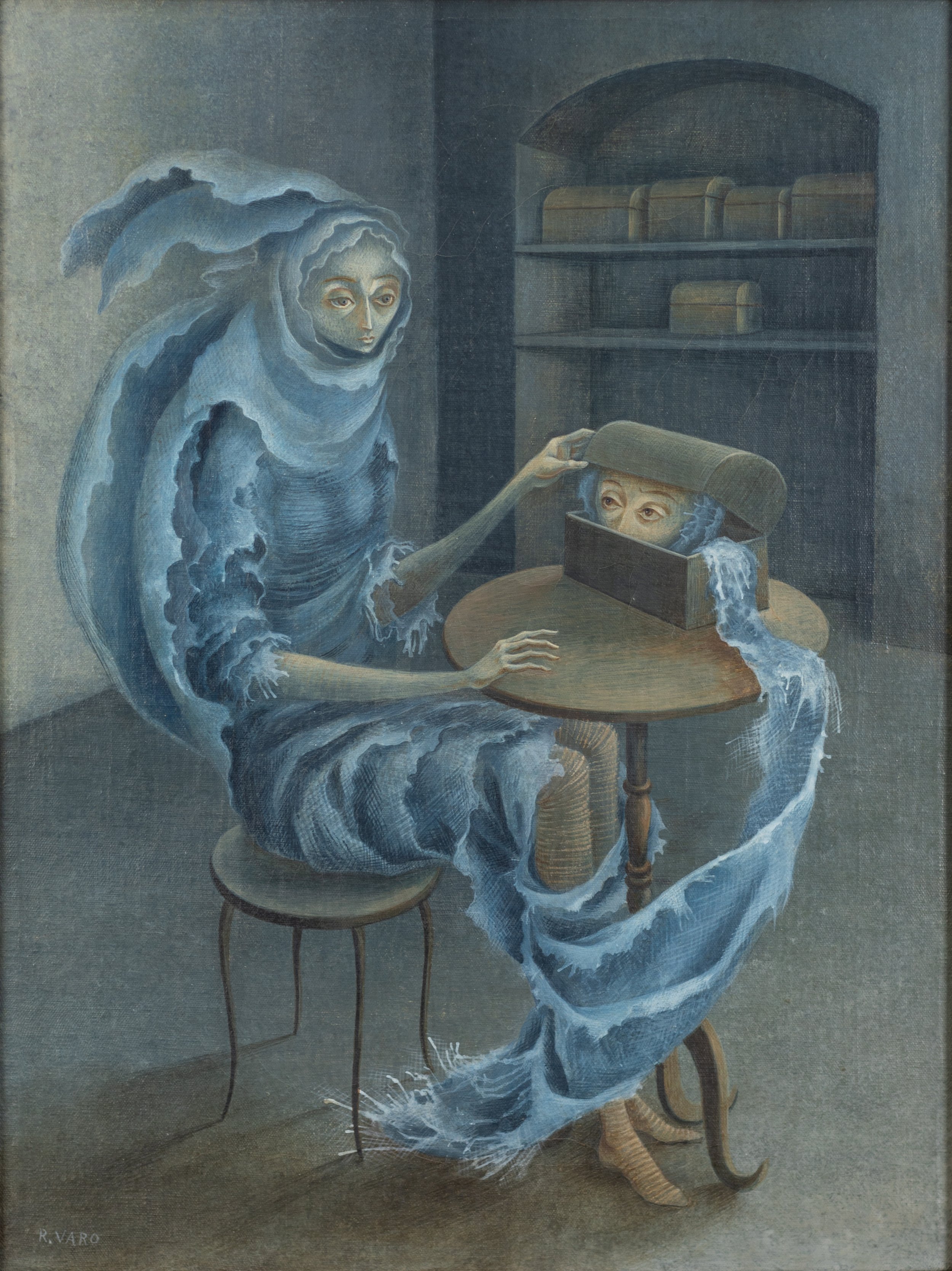At Gallery Wendi Norris, a Magical Encounter With Remedios Varo’s Work
Installation view of Remedios Varo: Encuentros, at Gallery Wendi Norris with 'Ruptura,' 1955 at right. (Photo by Glen Cheriton, Impart Photography)
Sarah Hotchkiss
June 23, 2023
There are benefits to opening a gallery within the vicinity of other galleries. The galleries at 49 Geary, their tenancy waxing and waning over the years, continues to provide multiple shows for the price of one elevator ride. But there is also novelty in a standalone space, tucked into an unexpected neighborhood alongside delights like the still-stunning Transamerica Pyramid.
Gallery Wendi Norris, once located near the downtown museums, then in a series of roving project spaces, has again rooted itself to a white-walled storefront — this time in the company of high-end boutiques and William Stout Architectural Books. But with the current show, the Jackson Street setting is just the appetizer. In Encuentro, a tight collection of paintings by the Spanish-born artist Remedios Varo, we get a once-in-a-lifetime meal.
Inside the gallery, Varo’s amber-toned oil paintings line the walls like pages from a forgotten storybook. Elemental beings — a watery figure encountering a possible doppelgänger, a bruja with a flame-red mane — are sentries and guides. In many pieces, delicate figures look out from the canvas mournfully, their wide eyes narrowing to pointed chins, papers and leaves swirling around them. A cloaked figure in Ruptura (1955) glances up and to the right, their back turned to windows of identical observers. It’s a moment of departure, a shirking of responsibility, a defiant rebuttal to expected conformity.
By the time she painted this piece, Varo had settled in Mexico after fleeing World War II; she would live there until her death in 1963. All the work in Encuentro comes from this period of her life — a fruitful, increasingly successful one marked by friendships with fellow exiled artists like Kati Horna and Leonora Carrington. Varo and Carrington, in particular, saw each other nearly every day, sharing their ideas and research (including the study of alchemy).
While many of the scenes Varo carefully painted — in thin, crosshatching lines of oil — have a mystical, otherworldly element, they are grounded by her inspired renderings of textures. Ruptura is bounded in by high brushy hedges. In Banqueros en acción (1962), black-suited bankers fly through a cityscape made of speckled — almost moldy — walls. The contrast between these more abstract moments and her precise renderings of humanoid creatures heightens the tension of each scene: which world do they inhabit? Can we psychically access this place?
Remedios Varo, Naturaleza muerta resucitando, 1963; Oil on canvas
Back in our present-day reality, outside of Varo’s entrancing brushstrokes, I write with some urgency. Usually, the 384 pieces of artwork she created during her lifetime are scattered around the world, in a mix of museum and private collections. Encuentro, a rare gathering, opened in May with 11 works spanning 1947–1963, but the complicated (and exciting) process of museum acquisition has whittled the exhibition down to just nine. One or two additional pieces may leave for similar reasons before the show’s July 15 closing.
The last painting Varo finished before her untimely death at age 54 is the show’s largest: Naturaleza muerta resucitando (1963), a swirling scene of fruit as cosmos, levitating in their own Milky Way above the twisted cloth of a set table. Without the sorcerer visible, we are left to assume it is Varo herself spinning these items aloft, the paint brush her wand. And so let it be a summoning, while there are still so many worlds to get lost within.





